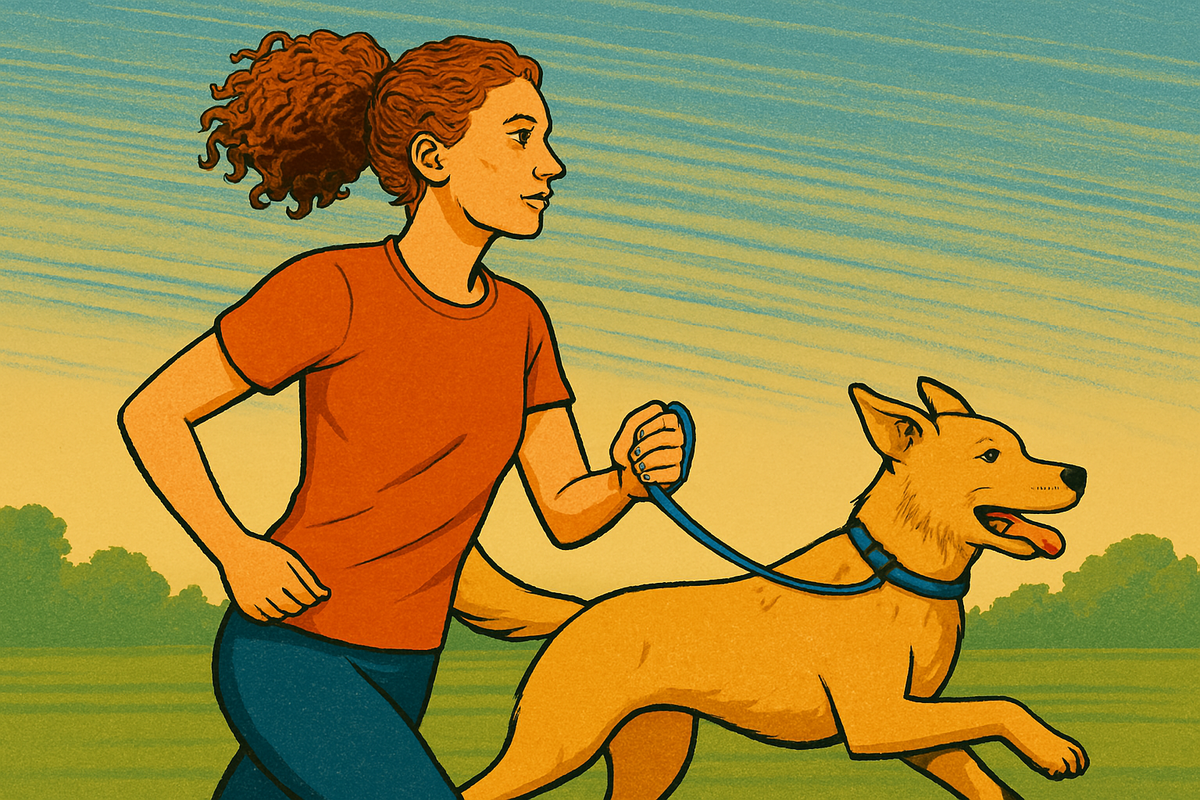
Looking for a workout buddy who’s always enthusiastic, never cancels, and doesn’t judge your exercise form? The perfect fitness partner might be wagging their tail at your feet right now.
Nearly half of all households in the US have a dog, and these four-legged family members can be powerful motivators for getting you moving. The deep bond between humans and dogs—sometimes called the “human-dog bond”—can be leveraged to help people of all ages become more physically active and improve their overall health.
Why Dogs Make Ideal Exercise Partners
Unlike that gym membership you purchased with good intentions, your dog provides a unique form of motivation that’s hard to ignore. Dogs need regular exercise for their physical and mental health, creating a sense of obligation that can help you overcome your own exercise resistance.
But it’s not just about obligation. The joy dogs display during outdoor activities is contagious (researchers call this “emotional contagion”), making your workout more enjoyable. Have you ever noticed how your mood lifts when you see your dog bounding happily through a park? That’s not just coincidence—it’s science at work!
Dog owners who regularly walk their dogs are more likely to meet physical activity guidelines than both non-dog owners and dog owners who don’t walk their dogs. The simple act of taking your dog for daily walks can help you:
- Build a consistent exercise routine
- Increase time spent outdoors
- Decrease sedentary behavior
- Strengthen social connections in your neighborhood
- Improve mental health through nature exposure
Benefits Beyond Basic Fitness
Dog-facilitated physical activity offers unique advantages that typical gym workouts don’t provide. When you exercise with your dog, you’re not just moving your body—you’re nurturing your relationship with a beloved companion while simultaneously reaping the combined benefits of physical activity, outdoor time, and social connection.
For older adults, dog walking can help maintain functional ability and independence. Regular dog walks provide structure to your day, strengthen muscles, improve balance, and increase social connections with neighbors—all crucial factors for healthy aging.
For children and teens, family dogs can inspire active play and help develop lifelong healthy habits. Children who grow up with dogs often develop stronger emotional bonds with them, which can translate to more active play time and a natural inclination toward physical activity.
Making Dog Walking Work for You
Ready to transform your dog from couch potato to workout partner? Here are some practical ways to get started:
For Beginners
If you and your dog are new to regular exercise, start small:
- Begin with 10-15 minute walks twice daily
- Gradually increase duration as your stamina improves
- Choose routes with minimal hills and good sidewalks
- Consider your dog’s age, size, and breed when planning distance and intensity
- Bring water for both of you on longer walks
For Regular Exercisers
Already active? Take your routine to the next level:
- Try “interval training” by alternating between walking and jogging
- Explore hiking trails suitable for dogs
- Play fetch in an open field for a combined cardio and strength workout
- Practice obedience commands during walks for mental stimulation
- Look for local “bark parks” where your dog can play off-leash while you get steps in
For Advanced Fitness Enthusiasts
- Research dog-friendly 5K events in your area
- Try canicross (cross-country running with your dog)
- Incorporate strength training by carrying a backpack during walks
- Use hills or stairs for increased intensity
- Consider agility training, which provides exercise for both of you
Safety First: Tips for Successful Dog Walking
To make your dog-powered workouts safe and enjoyable for everyone:
Start gradually: Just like humans, dogs need time to build endurance and condition their paw pads for longer walks.
Be weather-aware: Dogs are vulnerable to both heat exhaustion and cold-weather injuries. Adjust your walking schedule seasonally, and check paw pads during extreme temperatures.
Use proper equipment: A properly fitting harness reduces pulling and provides better control than a collar alone. Consider reflective gear for low-light conditions.
Stay hydrated: Bring water for both of you, especially on longer walks or during warm weather.
Practice good etiquette: Keep your dog leashed in public areas, clean up waste, and respect others who may not be comfortable around dogs.
Address behavior issues: If pulling, lunging, or reactivity makes walks stressful, consider working with a professional dog trainer who uses positive reinforcement techniques.
Don’t Have a Dog? No Problem!
Even if you don’t own a dog, you can still benefit from the human-dog bond to boost your activity levels:
- Volunteer as a dog walker at your local animal shelter
- Offer to walk a neighbor’s or family member’s dog
- Join a “borrow my dog” program that matches dog owners with walkers
- Attend “yappy hours” or other dog-friendly community events
These options let you enjoy the benefits of dog-facilitated exercise without the full-time responsibility of pet ownership.
A Lasting Exercise Partnership
What makes dogs such effective exercise motivators is the consistent, habit-forming nature of the relationship. Your dog needs daily activity, creating a reliable routine that’s more sustainable than motivation based solely on health goals or appearance.
Whether you’re a dedicated athlete looking to add variety to your routine or someone just beginning your fitness journey, your canine companion can be the perfect accountability partner. The human-dog bond provides a uniquely powerful motivation that combines joy, companionship, and obligation—a winning combination for long-term exercise adherence.
So grab that leash, lace up your walking shoes, and let your furry friend lead you toward better health. Your dog will thank you with enthusiastic tail wags, and your body will thank you with improved fitness and well-being.
This article is based on research by Katie Potter, Ph.D. and Colleen J. Chase, M.S., published in ACSM’s Health & Fitness Journal, Volume 26, Number 4, 2022.
